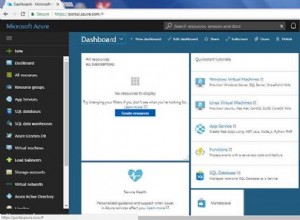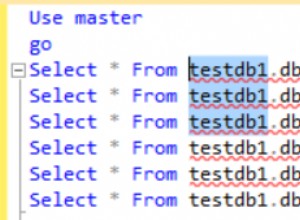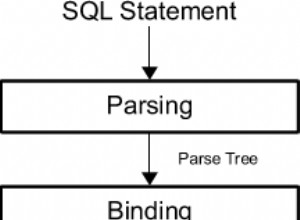È un ottimo inizio!
Sicuramente appiattirei tutto (ad esempio denormalizzare ) e creare documenti di prodotto simili a quelli riportati di seguito. In questo modo elimini la relazione N:M tra prodotti e flag semplicemente creando un flags matrice per ogni prodotto. Sarà così più facile interrogare quei flag.
{
"id": "00c8234d71c4e94f725cd432ebc04",
"title": "Alpha",
"price": 589.0,
"flags": ["Sellout", "Top Product"]
}
{
"id": "018357657529fef056cf396626812",
"title": "Beta",
"price": 355.0,
"flags": ["Discount"]
}
{
"id": "01a2c32ceeff0fc6b7dd4fc4302ab",
"title": "Gamma",
"price": 0.0,
"flags": ["Discount"]
}
Il tipo di mappatura del prodotto sarebbe simile a questo:
PUT products
{
"mappings": {
"product": {
"properties": {
"id": {
"type": "string",
"index": "not_analyzed"
},
"title": {
"type": "string"
},
"price": {
"type": "double",
"null_value": 0.0
},
"flags": {
"type": "string",
"index": "not_analyzed"
}
}
}
}
}
Dato che hai il logstash jdbc già inserito, tutto ciò che ti manca è la query SQL corretta per recuperare i prodotti e i flag associati.
SELECT p.Id as id, p.Title as title, p.Price as price, GROUP_CONCAT(f.Title) as flags
FROM Products p
JOIN flagsProducts fp ON fp.ProductId = p.Id
JOIN Flags f ON fp.FlagId = f.id
GROUP BY p.Id
Il che ti farebbe ottenere righe come queste:
+-------------------------------+-------+-------+---------------------+
| id | title | price | flags |
+-------------------------------+-------+-------+---------------------+
| 00c8234d71c4e94f725cd432ebc04 | Alpha | 589 | Sellout,Top product |
| 018357657529fef056cf396626812 | Beta | 355 | Discount |
| 01a2c32ceeff0fc6b7dd4fc4302ab | Gamma | 0 | Discount |
+-------------------------------+-------+-------+---------------------+
Usando i filtri Logstash puoi quindi dividere i flags in un array e sei a posto.




